Archived Storm Damage Blog Posts
7 Tips for Removing Odors From Flood Water
8/18/2023 (Permalink)
 Avoid lingering smells cause by water damage in North St. Paul, MN.
Avoid lingering smells cause by water damage in North St. Paul, MN.
Water damage can leave behind unpleasant odors caused by mold growth and bacteria. These tips can help you get rid of them.
Removing Odors Caused by Flood Water
Water can severely damage your home and contents in a variety of ways. One of those ways is by leaving behind unpleasant smells due to bacteria from sewage loss or mold growth. Fortunately, there are steps you can take to eliminate odors.
- Identify What Is Causing the Odor
If mold is the problem, then you have to remove the mold to get rid of the odor. If something else is causing the smell, then you can try cleaning and deodorizing to get rid of it.
- Dry Out Your Property Quickly
The most effective way to avoid mold odors is to prevent mold from becoming a problem in the first place. Mold can begin to grow in 24 to 48 hours after water damage occurs. The faster you can dry out your property, the less likely you are to have problems. Consider contacting a flood remediation company in North St. Paul, MN, to help you speed up the process.
- Remove Damaged Items
Removing water-damaged furniture, carpets, drywall and other materials can help you avoid a mold problem. Place these items outside to dry, if the weather permits. Removing this source of moisture will help you get your property dried out faster.
- Remove Mold
If you discover mold, you need to remove it to get rid of the smell. Inspect the damp places in your home where mold may be present. For areas smaller than 10 square feet, you may be able to clean up the problem by scrubbing surfaces with household detergent and water. Avoid using bleach. Bleach may kill mold, but will not kill mold spores and your attempt to clean the area may cause the spores to spread throughout your home. For larger areas, consider contacting a mold remediation company to assist you.
- Use Baking Soda on Carpets
When your carpet is dry, sprinkle baking soda on it and let it sit overnight. Use a vacuum to remove the baking soda. If you still have odors, try removing the carpet pad. Carpet pads usually can not be saved after water damage.
- Apply White Vinegar to Upholstery
Use a spray bottle filled with white vinegar to spray vinegar on your upholstered furniture. Allow the vinegar to air dry. Once the vinegar has dried, the odor from the vinegar and the water damage should be gone.
- Remove the Source of the Odor
If your water damage is the result of an ongoing problem, such as sewage backup or leaking pipes, repair whatever is causing the damage before you try to clean up odors. If you don't fix the problem, then the odors will probably keep coming back.
Lingering smells from mold growth or other problems caused by water damage can be a frustrating problem, particularly if you have already put in a lot of work to repair your property. However, there are steps you can take to get rid of bad smells and prevent them from coming back.
Driving Tips for Flooded Streets
7/20/2022 (Permalink)
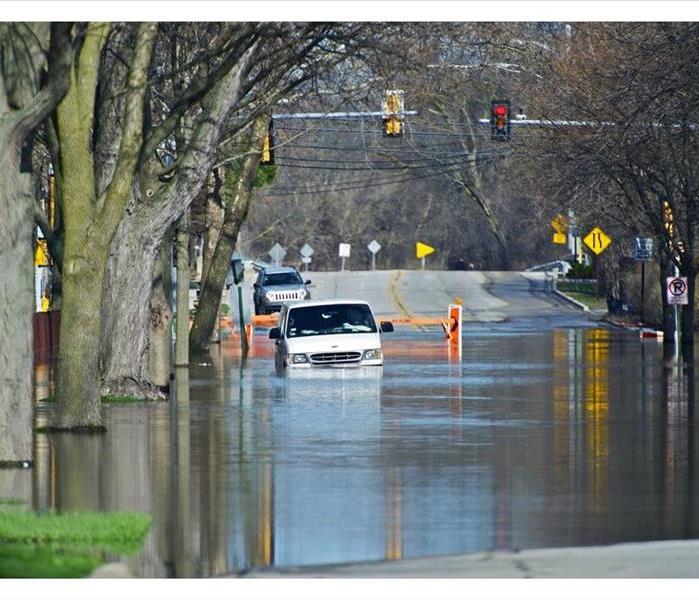 Avoid driving in flooded streets.
Avoid driving in flooded streets.
Because of the risks involved, drivers should avoid driving on a flooded street whenever possible. However, the weather can change quickly. It is important to know what to do if you unexpectedly must deal with a flood while driving your car.
Dealing With Flooded Roads
There are multiple reasons why you should not drive through water:
- Water may hide debris, dips or washed-out roads
- Six inches of water can immobilize most cars
- Hydroplaning, hidden debris and downed powerlines make roads dangerous
- Your car could float off the road
Tips for Driving on Flooded Streets
If you can't avoid driving on a flooded street, these travel tips can help keep you safe:
The water is usually the shallowest in the center of the road. Unless there is another car on the road, don't worry about staying in your lane. Stick to the center of the road.
- Only Cross Very Shallow Water
As little as a half-inch of water can cause you to lose control of your vehicle. If the water is above the center of your wheels, do not attempt to drive through it.
- Keep Your Car in Low Gear
To protect your car, stay in first or second gear. Drive with your foot on the gas and use the brake to regulate your speed. If you are driving a car with an automatic transmission, keep your speed low enough to stay in first or second gear.
Passing other vehicles is a safety risk. Stay in a single line behind other cars. The other cars will move water out of the way which can help you maintain traction.
If you must drive through water, enter it at one to two miles per hour and exit at three to four miles per hour. This will help avoid flooding your engine.
Once you are out of the water, brake lightly while driving very slowly. This will dry your brakes and help you avoid spinning out.
- Do Not Drive Through Moving Water
Less than a foot of water can float most vehicles and two feet can wash even a heavy pickup away. If you do drive into moving water and your wheels lose traction, open your car door to let water in. This will add weight to your vehicle and may bring it back in contact with the road.
- If Your Engine Floods, Abandon Your Vehicle
Restarting your car after the engine floods can do severe damage to your engine. Leave your vehicle and move to higher ground. If you are trying to rush home to save your possessions, don't risk it. A flood restoration service in Saint Paul, MN, can help you restore your home. It isn't worth risking your life or your vehicle to try to save your stuff.
- Do Not Drive Around Barricades
Barricades are there for a reason. There may be power lines down, debris or the road may be washed away.
If you encounter a flooded street, your best option is to take another route. If you must drive through standing water, follow these tips to keep yourself safe.
Ways To Mitigate Further Roof Damage After a Storm
7/19/2022 (Permalink)
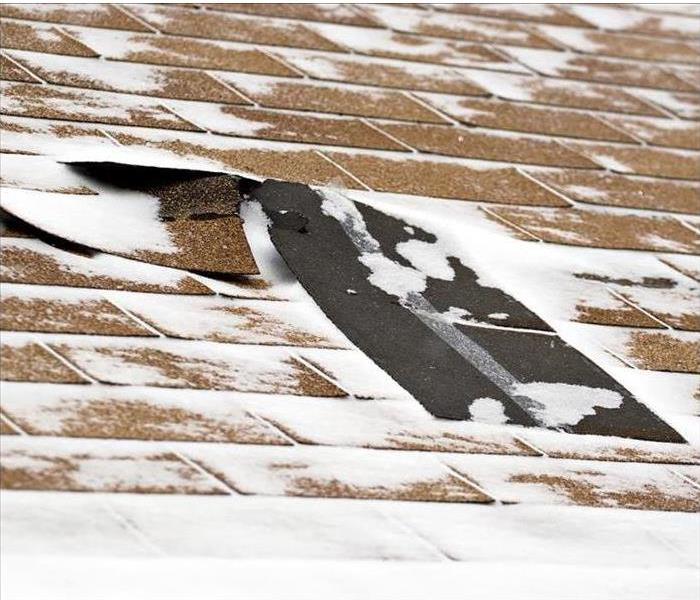 This roof suffered storm damage.
This roof suffered storm damage.
Residential storm damage encompasses many forms, from broken windows to floods. However, among the most common issues following severe weather is roof repair. Before a homeowner can receive funds from their insurer to repair the damage, they often need to ensure nothing else significant happens to the roof or the home, and there are at least three ways to do that.
4 Ways to Protect Your Roof After Storm Damage
- Plywood
Most roof damage following a storm will result in roof leaks. These leaks can stem from small or large holes in the roof. If the holes are not too large, a single sheet of plywood can be attached to the roof to limit any further water penetration into the home.
- Tarps
For holes requiring significant roof repair, a sheet of plywood might not be big enough. In these cases, you can opt for a tarp, weighing down the ends to ensure a secure fit. Tarps are lightweight and easier to manage than pieces or sheets of wood.
- Shingle Replacement
In some instances, wind damage will result in missing shingles. If you can find the shingles and replace them, you can potentially save yourself some money. However, when the shingles are blown from the roof, it is not uncommon for there to be more damage to the roof or the shingle.
- Call a Professional
Ultimately, the best way to resolve roof damage from a storm is to call a storm restoration company in North St. Paul, MN. These professionals have a working knowledge of insurer expectations and can help you mitigate further loss quickly.
It is not uncommon for a severe storm to lead to the need for roof repair. While the mitigation process sounds easy enough, using plywood and tarps to cover holes, it can be dangerous and is often best left to professionals. Residential storm damage is a complex issue, and every homeowner should familiarize themselves with the expectations of their insurance provider.
Flood Safety Tips Before, During and After the Storm
5/26/2022 (Permalink)
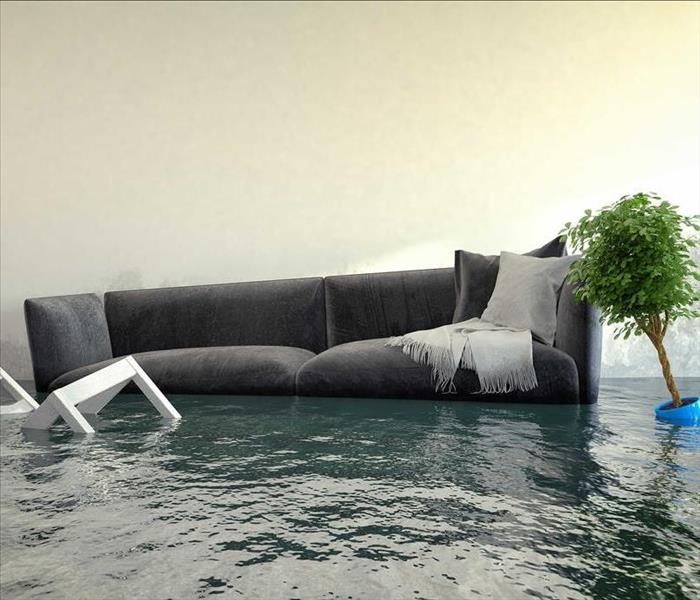 Avoid Further Storm Damage in your Property by following our Tips.
Avoid Further Storm Damage in your Property by following our Tips.
A severe storm in North St. Paul, MN, has the potential to create flash floods and underground flooding. When that happens, flood safety is essential to weathering the storm. While flooding may create chaos, there are ways to help you handle the situation before it hits, as the waters rise and once the floodwaters diminish.
Flood Prevention Before the Storm
Although there is no way to completely flood-proof your home, there are ways to minimize the potential damage. Those include:
- If the home doesn’t already have it, installing backflow valves helps reduce the chances of sewer lines backing up. A sump pump is another alternative that works to keep water from rising.
- For homes in areas prone to flooding, consider investing in flood barrier systems or keeping sandbags on hand. Many of these new systems easily inflate and deflate.
- Appliances in the basement should be elevated and anchored to keep them above any potential standing water.
- Landscaping plays a key role in how the waters flow away from the home. Ensuring the grading is sloped and planting moisture-seeking vegetation may help ease the runoff and reduce soil erosion, which may lead to foundation issues.
- Flood detection devices are available that detect any unwanted moisture. Many on the market can easily be used with other smart devices.
- Any vital documents or memorabilia should never be stored in the basement. Moving it to a higher floor increases the chances of them avoiding water damage.
- As part of regular maintenance, ensure that gutters are clean, trees are trimmed and the foundation shows no signs of cracks.
Flood Safety During the Storm
As the waters start to rise, safely navigating the storm is the top priority. The below safety tips are essential to follow:
- Ensure the utilities are turned off at the main switch.
- Fill sinks and bathtubs with fresh water to avoid dealing with contaminated water.
- Avoid driving and walking through floodwaters. Even six inches of water has the potential to make you lose control of the vehicle or whisk you away.
- If traveling during the storm, leave the vehicle and get to higher ground. Be sure to watch out for any power lines that are down.
Call the Professionals After the Storm
After the storm subsides, it can feel overwhelming. Taking the steps below makes it easier to navigate the aftermath.
Ensure the home is safe before re-entering. This includes avoiding using electricity until it is deemed safe.
Inspect the home for damage, including structural damage.
Take videos and photos of all the damage and file a claim.
Once your insurance provider gives the go-ahead, starting the water extraction and drying processes are vital to minimizing the chances of secondary damage, such as mold growth.
Call a certified flood damage restoration company to help with the cleanup and recovery. The right company will be able to provide beginning-to-end services, from boarding up broken windows to replacing drywall and more.
During severe weather, flood safety should be the only priority. Before and after the storm, consider the above tips to help minimize damage and recover more quickly.
Storm Tips To Keep in Mind
2/22/2022 (Permalink)
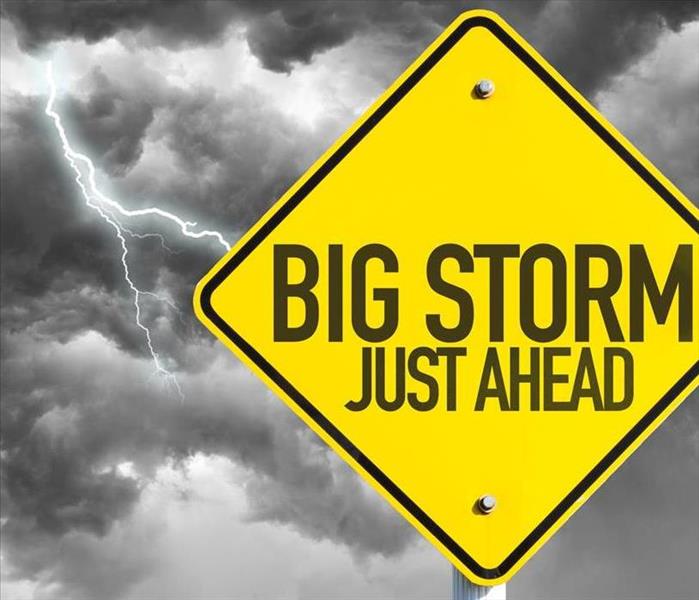 Keep in Mind these Storm Tips to protect your North St. Paul, MN property.
Keep in Mind these Storm Tips to protect your North St. Paul, MN property.
Winter is coming to a close, and spring is arriving on its heels. As the seasons' change and weather patterns transform, you can expect some wet and potentially destructive weather. According to many restoration services in North St. Paul, MN, there are several storm tips you should consider to protect your house, including:
- Exterior assessments
- Interior inspections
- Routine landscaping maintenance
While these tips are great to prepare for the weather, what do you do when a storm causes damage? The process for recovery is not so cut and dry, literally.
Storm Damage: Storm Tips for a More Efficient Recovery
Storm damage can range in losses. A property can experience minor issues like the loss of a couple of shingles, or the house can experience significant wind and rain damage, resulting in broken windows and holes in the roof.
While many homeowners will acknowledge the need for a restoration service when faced with extensive damage, it is what they do in the meantime that can confuse and overwhelm them. Fortunately, the aftermath of a storm can often be handled in the same way you deal with prevention, through inspections and maintenance.
Focus on Safety
Before you delve into assessing your property after a storm, it is necessary to consider safety. Did the storm cut power or cause extensive flooding? If so, you should shut off your power to prevent the threat of electrocution.
Did part of the roof collapse, or is there a significant leak stemming from the ceiling? If so, you might want to stay clear of the area in case of further collapse.
While assessing damage is important, your safety is paramount. You should never do anything to risk your life or anything you feel uncomfortable doing. Call the professionals; that is their job.
Mitigate Loss
If your home is significantly damaged, you will likely want to file a claim with your insurer. One critical point to understand is that insurance companies expect clients to protect their homes against further loss.
Therefore, if the storm causes a leak or shatters a window, your insurer might expect you to put out a bucket to collect water or to board up the window to prevent further property damage.
The process of protecting your property against further damage is called mitigation. Thankfully, restoration companies can also help with mitigation processes like boarding up homes, tarping or even putting up fences.
Assess Damage
If possible and safe, you can walk around your property to assess the damage. Depending on the extent of the damage, you can also take pictures and create a loss statement.
Taking pictures and locating receipts can help move the claims process along when the insurance adjuster comes to inspect the damage. Restoration companies can also help you through the claims process by acting as an intermediary between you and your insurer.
By following the above storm tips, you can make the recovery process less intimidating and more efficient. Remember, you do not have to go through a storm recovery alone. Your insurance company and the restoration service you contract are there to help. All you need to do is call the professionals.
Why Can Storms Mess Up a Septic System?
1/17/2022 (Permalink)
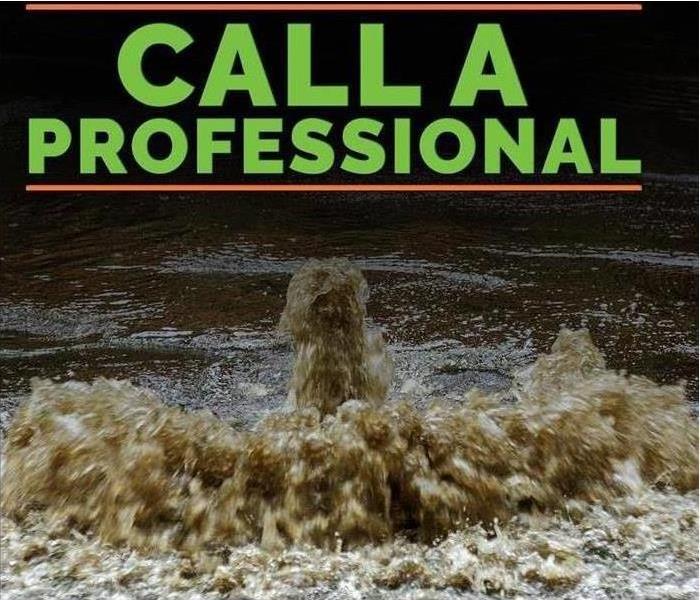 A sewer backup can be prevented, but it requires action before any storm strikes.
A sewer backup can be prevented, but it requires action before any storm strikes.
Wet storms in White Bear Lake, MN, often lead to a variety of water damage. In the event of a sewer backup, a storm can play a huge part in unwanted black water making its way into your commercial property. To prevent major damage to your business, it is crucial to know how to identify and prevent this type of secondary storm damage.
How Septic Problems Happen During Storms
Most problems with backflowing sewage come from the ground absorbing too much moisture from rainwater and blocking any further flow. Certain circumstances increase the likelihood of having a sewage problem during or after a storm:
- Increased blockage from storm debris such as fallen trees or their branches
- Pipes designed for both waste and stormwater flooded with water over the capacity
- Old or defective sewer lines connected to your business
- Trees grow roots deep into a sewage system and limit the water flow when needed most
Once any preexisting problems are dealt with, you should consider enacting preventative maintenance.
Stopping the Problem Before It Happens
A sewer backup can be prevented, but it requires action before any storm strikes. Regular inspections of the septic system connected to your business are a good way to prevent issues. Any untreated problems with the system may become an increased likelihood of backflow. The system may seem to function normally, but it may be unable to withstand the increased water flow of a storm.
The soil in your business’ drain field, an area where sewage equipment is located, should be kept clear of unnecessary water. Any runoff pouring into the area compromises the efficiency and capacity of the system when you need it.
Treating the Aftermath
Sometimes, despite best efforts, water damage from both black water and rainwater cannot be avoided. A local storm damage restoration company can help recover your commercial building and assets damaged by a storm. With proactive actions to reduce the risk of a sewer backup and lessen this damage, you can stop your business from going underwater both figuratively and literally.
Tips for Sump Pump Maintenance
10/29/2021 (Permalink)
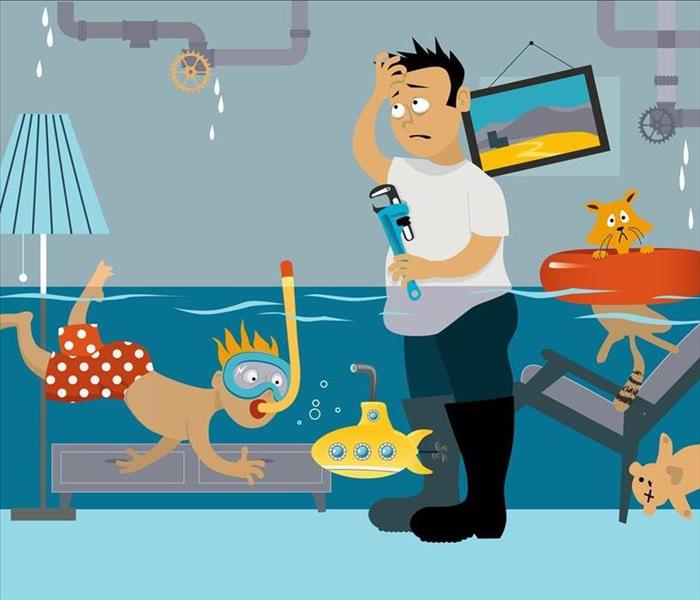 The maintenance of the sump pump will avoid a flood in your White Bear Lake, MN home.
The maintenance of the sump pump will avoid a flood in your White Bear Lake, MN home.
The space in your home in White Bear Lake, MN, is most likely to flood in your basement. You can have a strong foundation and take all the recommended precautionary measures to keep water out of the lowest level of your house, but a heavy storm may still overcome all the barriers you put in place. A sump pump is a smart addition to any basement, particularly if your home is in a flood plain, but it only helps you if you keep it in good working order. Here are some tips on how to do so.
How To Maintain Sump Pump
Keep Sump Pump Pathways Clear
Allowing water to flow out of your house is the pump's main job. The key to good pump maintenance is keeping the path of the water unobstructed. There are four main areas of the pump where clogs are most common:
- Intake screen
- Pit
- Vent hole
- Discharge pipe
If dirt or debris gather in any of these areas, the pump can overflow, dumping the water back into the basement it is designed to protect. By keeping the pump clean and clear of blockages, you can ensure that it is able to do its job and move water out of the basement in a timely manner.
Maintain a Regular Testing Schedule
Even if your sump pump is clear of debris, you can't always tell if it's working by looking at it. Fortunately, the pump is pretty easy to test. Fill a bucket with water and pour it into the basin. This should trigger the float and activate the pumping mechanism. You'll know it's working properly if the water drains quickly.
Flood damage mitigation experts recommend that you test your pump at least once a month, particularly during rainy seasons. Frequent testing ensures that your pump is ready to protect your basement if a particularly heavy storm hits your area.
Ensure Access to Power Sources
No matter how great a shape your pump is in, it doesn't work if it isn't connected to a reliable power source. Frequently inspect the power cord for flaws and plug it into a ground fault circuit interrupter outlet. Additionally, you must make sure the GFCI outlet is located above the flood line of your home. It can't power your pump if the flood itself causes it to malfunction.
It's also good to have a backup power source. A generator can supply your home with power even if the municipal structure fails. Many sump pumps come equipped with their own battery backup, so that may be a factor you want to consider when choosing one for your home. If you select this option, you need to check the battery periodically to make sure it's still strong.
A sump pump can be a lifesaver for your basement or the lowest level of your home during a heavy storm. While the best protection from flooding is prevention, that's not always feasible, particularly if your home is located in a flood plain. A reliable pump helps you get floodwater out of your home quickly before it can cause a lot of damage.
Landscaping Tips for Flood Control
8/26/2021 (Permalink)
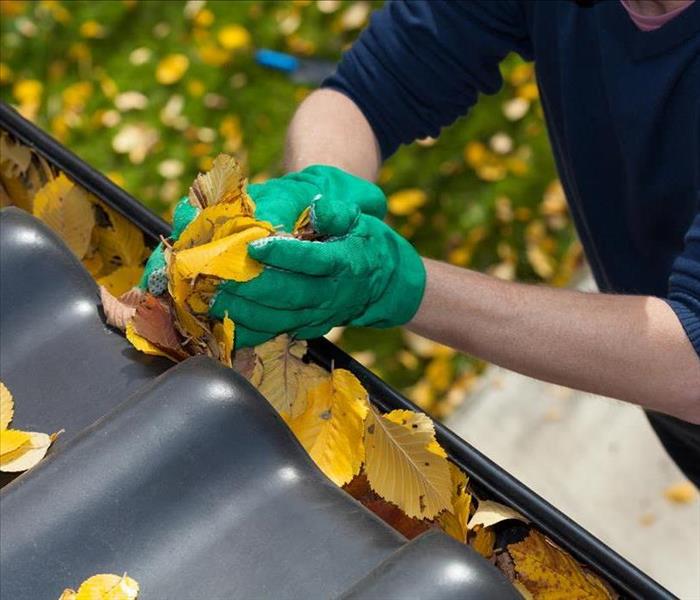 Maintaining the rain gutter clean will prevent water damage in your White Bear Lake, MN, home.
Maintaining the rain gutter clean will prevent water damage in your White Bear Lake, MN, home.
A heavy storm in White Bear Lake, MN, can pose a threat to your home. If you live in an area prone to outside flooding, you know what a difference even small changes can make when it comes to protecting your property.
Here are a few ways your landscaping can help divert floodwater away from your home.
Driveway Update
One of the common culprits in flooding is a concrete driveway. Unless the original design includes proper drainage structures, water from a rainstorm is likely to either flood municipal drains or direct unwanted flow toward your house. A good alternative is to find material that works with your natural landscape and allows water to absorb into the soil beneath the drive:
Rather than leave flood water with no place to go, these driveway materials allow it to soak into the soil where it belongs. This helps keep your home safe.
Heavy Mulch
Another problem with flooding is the debris that tends to spread everywhere. Mulch is great for your garden, but it's not something you want to end up in your living room. Instead of using wood chips or some type of material that can easily be washed away, choose a heavier mulch. Many synthetic mulches provide the same protection to the plants and still stay in place when excess water from a storm is present.
Rain Garden
If you want a low-maintenance landscaping idea, a rain garden is right up your alley. It can also help divert water away from your home during an outside flooding event. Choose native plants that have different moisture requirements. Plant the ones that can withstand a lot of water in the middle, a lower portion of the garden, and place the ones that don't need as much water around the perimeter. The rain will run down to the middle of the garden and pool there, giving all your plants exactly what they need and keeping the water away from your home.
Downspout Direction
Your gutters and downspouts are prominent factors in rain drainage around your home. Of course, you want to make sure that the gutters stay clean and free of debris. It doesn't do any good, however, to efficiently drain water off the roof if it just ends up gathering around your foundation. Flood damage experts recommend diverting rain spouts away from your home to prevent flooding.
Swales and Ditches
A swale is useful in residential neighborhoods to keep water from your yard out of your neighbor's property, and ditches keep runoff from flowing into the road or municipal drains. The water flows down the incline where it pools at the bottom. Many homeowners line the bottom of the swale with rocks and plant vegetation on the sides to slow the flow of the water.
You can't control the weather, but you can take specific steps to manage the effects it has on your home. By choosing landscaping options that use outside flooding to your advantage, you not only protect your house but also can sustain a beautiful lawn and garden
Mold Prevention After Flooding
8/17/2021 (Permalink)
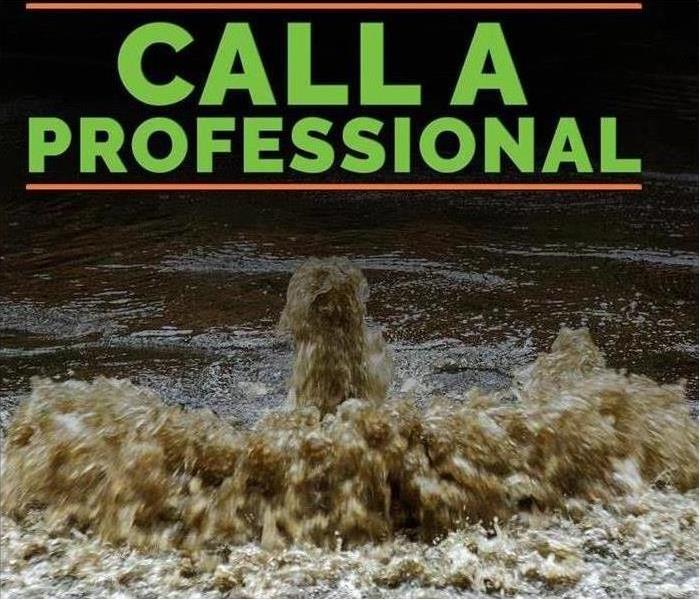 Call a professional after flooding to clean up and to avoid further damage.
Call a professional after flooding to clean up and to avoid further damage.
As storm season approaches, it is important to brush up on your damage prevention strategies. While no homeowner likes to think about what a bad storm in North St. Paul, MN, could do to the house, planning what to do if flooding does occur can help you prevent secondary damage such as mold growth. Here are several problems that can lead to a fungus infestation and what you can do to resolve them quickly before that happens.
Excess Water
A common problem after a storm is excess water. There are several places in your home where floodwater tends to pool:
- Basement
- Crawl spaces
- Attic
The longer water remains in your home, the more damage it causes. One of the first things that water restoration specialists will do when they arrive at your home is pumped the standing water out of your house. Their industrial pumps can make this process go smoothly and quickly. To minimize flooding, it is smart to have a sump pump installed in areas of your home that are most likely to flood during a storm.
Saturated Structure
One of the issues that causes the most storm damage is the saturation of parts of the structure itself. Porous materials such as drywall and floor tiles don't stop water from seeping in. If the damaged wall isn't torn out and replaced, mold growth can occur. The fungus can start to grow in as little as 24 hours after a high level of moisture settles in, so it's important to mitigate water damage in a timely manner.
Damaged Items
Bacteria in flood water can aid the growth of mold and cause unpleasant odors. It's important, therefore, to include every item in your home in the mitigation process. Anything in your home that is touched by contaminated water needs to be cleaned or thrown out.
Mold growth and other secondary damage don't take long to take root in your home after it floods. Quick, professional remediation is the key to avoiding these problems.
4 Tips for Managing a Storm-Canceled Flight
7/17/2021 (Permalink)
 A cancelled flight due to the weather can be a stressful experience. Take a deep breath and follow these tips.
A cancelled flight due to the weather can be a stressful experience. Take a deep breath and follow these tips.
Many people think of air travel as a stress-inducing event, not just the act of flying but the entire process. When a storm hits and throws off your travel plans unexpectedly, it creates an even bigger headache. It's beneficial to understand beforehand what to do in the case of a canceled flight so the process can go smoother. Here are some tips for managing a flight that was canceled due to weather.
1. Understand Your Rights
When you schedule a flight, you agree to specific terms, which vary from airline to airline. These terms also vary from country to country. For example, the European Union requires airlines to compensate clients such as hotel rooms and meals for delays longer than two hours and cancellations. However, the United States does not have these regulations.
2. Use Social Media
When you're stressing over a canceled flight, you may not consider alternative forms of contacting the airline such as social media platforms such as Twitter. Sometimes customer service is more accessible by this means of communication. It's a good suggestion for contacting other services, such as storm damage restoration professionals.
3. Check the Airline's Website
Check the airline's website to see if you can check your flight's current status. It should also tell you if the airline has booked you on an alternate flight. If you need more information, call the airline or go to the customer service desk.
4. Call the Airline
If you're already at the airport when you find your flight has been canceled, you can go to your airline's customer service desk and wait, and while you're waiting there, call the airline on the phone. Depending on the airline, a weather-related cancelation may entitle you to hotel or food vouchers, maybe even a replacement airline ticket.
A canceled flight will never be a stress-free event. Just as with other storm tips, the key is to being prepared beforehand anything happens. This way, before you head out of North St. Paul, MN, you'll find it easier to navigate the unexpected.
How To Clean Sewage Backup
5/28/2021 (Permalink)
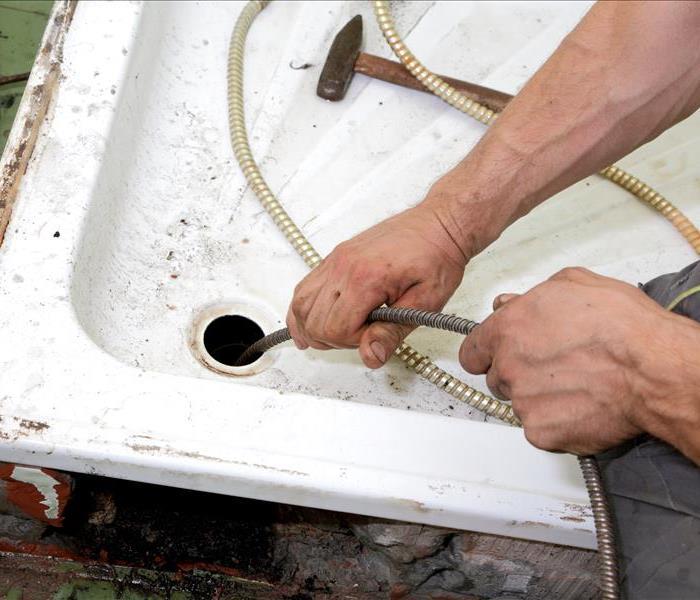 Sewage cleanup may require a professional to get it done.
Sewage cleanup may require a professional to get it done.
Not only is a sewer backup disgusting, but it is also a serious health hazard. Cleaning one up is no laughing matter. It is something that takes time, patience and a bit of know-how. Here are some things that you can do if you've had a sewage backup in your home.
4 Tips to Clean Sewage Backup in Your Home
Turn Everything Off
A sewage backup or leak is essentially a flood. You should turn off and unplug any appliances or electronics in the area. If you can't do this safely, turn off the main electricity to the house. Items to watch for when it comes to electricity and flooding are:
- Hairstyling tools in the bathroom
- Appliances
- Lights that plugged in or are wired into the wall
- Heaters
These items might get missed in the effort to clean up.
Safety First
Before removing any sewage, think of your safety. Wear goggles, a mask and protective clothing. Contaminated water is dangerous, and you don't want any to get on you. Even a simple sewer backup can be harmful. If you are not sure, call a professional sewage cleanup company in White Bear Lake, MN, to help.
Remove the Sewage
If you have already located and corrected the backup's source, it is time to get rid of the mess. Removing the sewage is one of your first steps in cleaning up. You can do this with a wet/dry vacuum. It may be tempting to rinse the waste down, particularly if the problem is a bathtub backup where it is relatively easy to do. Don't do this. Sewage can harden in drains and cause you even more problems.
Clean the Area
Once the sewage is gone, use a disinfectant to clean the area. Do not just use soap and water. You need something that will kill bacteria and other microbes to be safe. Throw out any rags or sponges, so you don't use them for anything else.
A sewer backup can be a serious problem if you don't know how to handle it. When you have a sewer problem, just take it one step at a time and remember to clean the area thoroughly.
3 Things You Should Do After Storm Damage
1/28/2021 (Permalink)
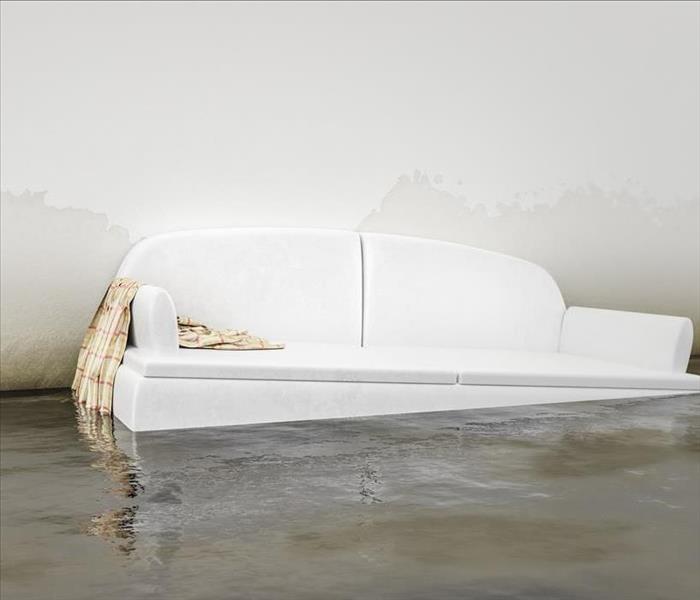 Heavy rains can lead to severe flood damage
Heavy rains can lead to severe flood damage
It is very important to file your flood insurance claim and take steps to mitigate your damage as soon as possible after storm damage occurs. The longer you wait, the more damage may occur to your property. These are three things you should do after your property is damaged by a storm.
3 Things To Do After Storm Damage
1. File an Insurance Claim
When large storms occur, insurance companies will be very busy trying to process all of the claims that result. If you have flood damage or wind damage from the storm, you should file your claim as soon as possible, so that you don't end up getting stuck at the back of the line.
2. Mitigate Your Damage
Because it may take a while for the flood insurance company to inspect your damage and give you the go-ahead to begin repairs, it is important to take steps to mitigate your damages while you wait. If you have a hole in your roof, place a tarp to prevent leaks from occurring while you wait for repairs. Board up any windows that have broken. If your home has water damage it is important to dry it out quickly to prevent mold damage. Consider contacting a water mitigation company in North St. Paul, MN, to get your property dried out fast.
3. Document Your Damage
Before you start making temporary repairs or removing damaged contents, document your damage for the insurance company. Take photographs or video of your damaged property. Keep receipts for materials and labor used to make temporary repairs. If you have any records that prove the value of your damaged property, gather them together.
Your flood insurance company may be overwhelmed with the volume of claims filed after a major storm. These three steps can help you prevent unnecessary damage to your home and ensure that your claim is processed as quickly as possible so that you can begin repairs.
How To Check for Hail Damage on Your Roof
10/28/2020 (Permalink)
 Hail can cause severe damage to your roof.
Hail can cause severe damage to your roof.
Roofing materials matter when it comes to inspecting a hail-damaged roof. Hail impacts wood, asphalt and composition shingles differently. Here’s what you need to know.
Facts About Rood Damage Due to Hail
What To Look For With Wood Shingles
If your North St. Paul, MN, home is topped with wooden shingles, there are four main things to look for if you suspect your roof requires hail damage repair:
- Shingle splits that are orange or brown in color
- Splits that are very sharp along the edges and/or corners
- Splits that show no signs of damage along the edges
- Damage that appears random and doesn’t seem to follow a pattern
What To Look For With Asphalt or Composition Shingles
While a hail-damaged roof that’s covered with asphalt or composition shingles may also show signs of damage that seem random and don’t appear to follow any pattern, that’s where the similarities end. These types of shingle may also show the following signs of hail damage:
- Shiny-looking asphalt or mats
- Hail impacts that appear black in color
- Hail impacts that feel soft, like a pressing on overripe piece of fruit
- Exposed roof felt due to loss of granules
- Damage that appears random and doesn’t seem to follow a pattern
What To Do Next
If you determine that your roof has suffered hail damage, one of your first calls should be to a storm damage restoration company. Its technicians will come to your house and perform a thorough inspection of your roof, as well as other areas that may show signs of damage. Hail may lead to hard-to-spot cracks in your roof that can allow water to enter your home, for example. These cracks are often best assessed from inside the home.
Dealing with a hail-damaged roof doesn’t have to be stressful. By acting quickly and enlisting the help of trained professionals, you can repair and restore your roof promptly and get back to the business of everyday life.
3 Helpful Tips That Will Save You Money on Home Maintenance
9/29/2020 (Permalink)
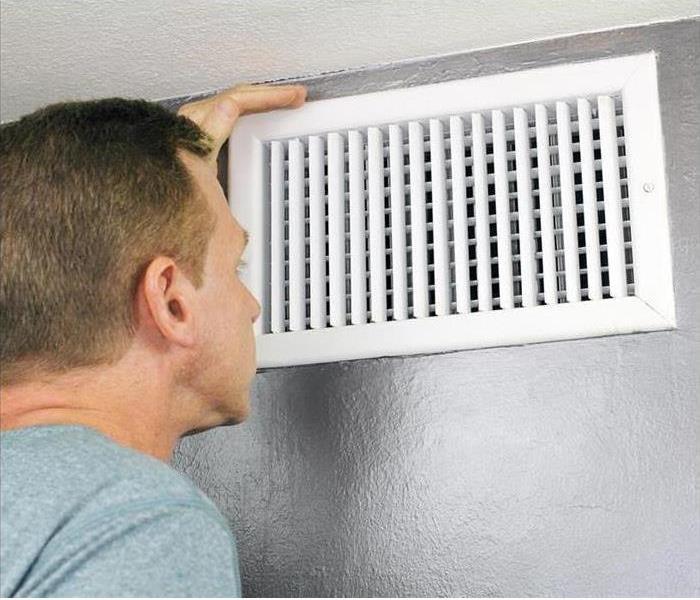 Change air filters
Change air filters
When it comes to keeping an updated and efficient home, many homeowners are concerned about the maintenance cost. From adding updates to keeping things in working condition, the bills can add up quickly. If you are looking to save money on the upkeep of your North St. Paul, MN home, consider the following three tips for making facility management less expensive.
Three Tips for Making Facility Management Less Expensive
- Reduce Lighting Costs
While it may sound simple, reducing the cost of lighting your home can be a huge cash saver. If you are using the same old light bulbs and fixtures that came standard in your home when you moved in, you may be spending more than you need to in monthly electricity expenses. While switching out cheap incandescent bulbs may sound counter-intuitive, the long-term savings can really pay off. Swap out standard light bulbs with compact fluorescent bulbs (CFLs) to take advantage of the following savings:
- Reduce your energy use by up to 75%
- Go up to five times longer between switching out light bulbs
- Reduce greenhouse gas emissions and contribute to a healthier planet
- Small Updates Over Time
Although it can be tempting to go all-in on your list of fixer upper projects, doing small updates over time may be a more frugal option. Save up for projects that will lower you home maintenance cost. Rather than adding pretty new cabinets to your kitchen, think about getting a more energy efficient furnace or air conditioning unit to save on your monthly utility bill.
- Don't Forget Routine Upkeep
While updating and upgrading is always appealing to homeowners, it is important to remember to take care of your existing fixtures. Some of your long-term home maintenance cost can be reduced by doing simple things regularly, including the following:
- Change air filters
- Replace missing or damaged roof shingles
- Clean drains of debris and buildup
By taking care of your home's structure on a regular basis, you may avoid the need for home repairs after a storm strikes near North St. Paul, MN.
How To Prepare Against Flood Damage
9/18/2020 (Permalink)
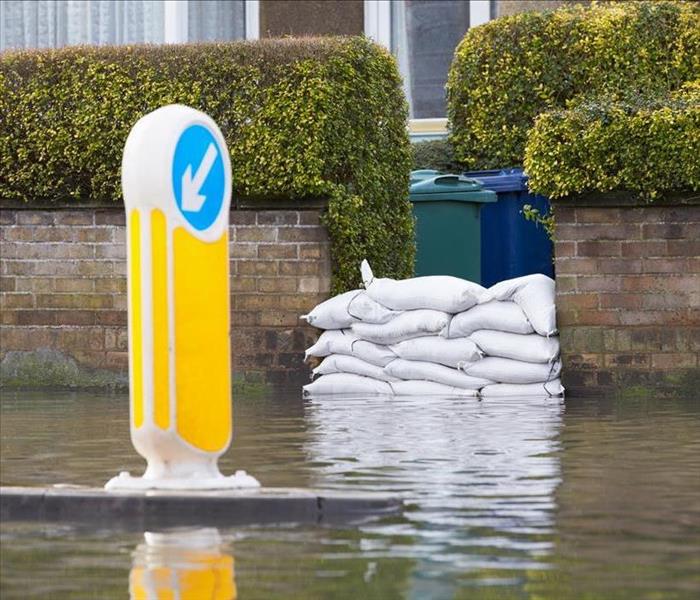 You can prevent most storm damage caused by flooding by placing a temporary barrier.
You can prevent most storm damage caused by flooding by placing a temporary barrier.
How prepared are you for the fall weather? This time of year brings about some of the most severe weather patterns, which can leave your home vulnerable to flooding and other storm damage. Instead of worrying over the possibility of damage, contact a storm mitigation company in North St. Paul, MN, to help you plan for prevention. Most companies will suggest at least three methods for reducing or eliminating the risk of a flood.
3 Methods For Reducing The Risk Of A Flood
1. Secure Loose Yard Items
While water is a prominent part of flood damage, many people forget about loose debris that may collide with your windows or other vulnerable entry points. Therefore, one of the first things you should do if worried about floods is to secure any loose lawn ornaments or furniture. While some items may be heavy enough not to float away, others can lead to extensive issues. You can secure items with long stakes and ties, or even by placing cinder blocks or other heavy objects on top of the things. It may also be a good idea to secure the item in a garage or other outdoor building where it cannot cause damage.
2. Elevate Sensitive Materials and Appliances
While flooding poses a significant risk to your house's structure, it also poses a threat to your sensitive documents and appliances or devices. If you are aware of a flood threat, then make sure that all items are raised above the estimated flood level.
3. Place a Temporary Barrier
You can prevent most storm damage caused by flooding by placing a temporary barrier. Use sandbags stacked above the estimated flood line to create a blockade from water. You may need to set pumps inside the border to prevent the water level from rising on both sides, but a pump and barrier can protect your property.
Fall is a season for severe weather. If you are concerned about potential flooding, then contact a local mitigation company to discuss preventative steps.
Filing a Flood Insurance Claim
8/26/2020 (Permalink)
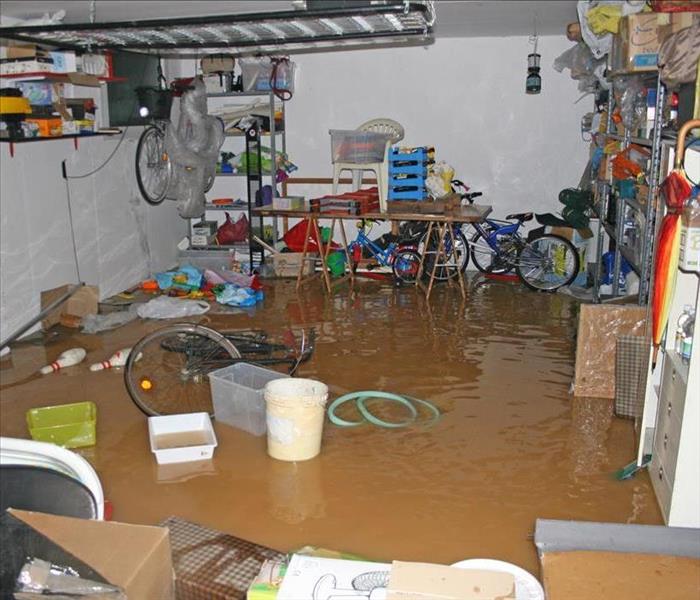 Flood Damage in a White Bear Lake, MN, home.
Flood Damage in a White Bear Lake, MN, home.
While making a flood claim may sound like an intimidating process, any storm remediation professional in White Bear Lake, MN, can tell you the process is straightforward. After the flood, there is a standard four-step process you can follow to protect your claim and ensure its approval.
- Call insurer
- Mitigate loss
- Clean
- Compile proof of loss
4 Steps to Filing a Flood Insurance Claim
Call Insurer
You will first want to call your insurance representative and explain the cause of the disaster and when it occurred to get the insurance claim process moving. The sooner you can notify the insurance company, the better because they need to schedule an adjuster to come out and assess the damage to your property. Most adjusters have a busy schedule, which means they may not visit the site for a few days or more.
Mitigate Loss
A significant portion of the flood claim process will rely on the homeowner and the remediation company they hire. The primary aim before the adjuster gets to the property is to mitigate further loss. You will want to cover holes and excavate excess water. Also, dehumidifiers, fans and pumps may be used to speed up the drying process.
Clean
While waiting for the adjuster to visit, you can begin cleaning your house. However, do not be too quick to dispose of damaged or insured items. You will need a record for the insurance agent when they arrive. Cleaning the property allows the adjuster to walk the premises and spot damage more easily.
Compile Proof of Loss
You may want to organize damaged items for the adjuster to inspect. Also, it is an excellent idea to compile any receipts you may have for the items to help in the valuation process.
A flood claim need not be a confusing or overwhelming process. If you organize the mitigation and cleanup, remediation and claim procedures are more approachable. Talk to a remediation specialist for greater insight into the claims process.
Basic Disaster Preparedness Steps
7/24/2020 (Permalink)
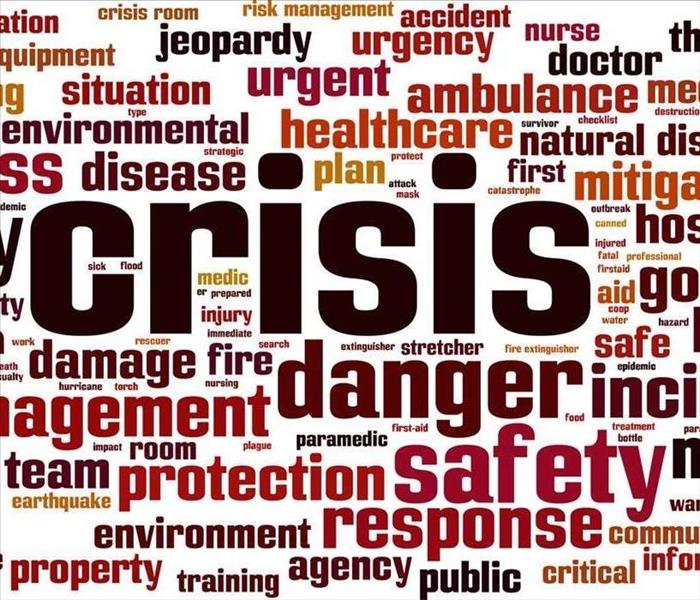 Disaster Preparedness can help you avoid a crisis during an emergency.
Disaster Preparedness can help you avoid a crisis during an emergency.
Natural disasters present a lot of pressing challenges to business owners, and it can be difficult to determine the best route for disaster preparedness. After all, the preparedness plan must include answers to many potential scenarios:
- What if roads are blocked and your employees or suppliers can't get through?
- What if winds knock down power lines?
- What should happen if your building is damaged by wind, rain, flooding, or other natural elements?
- How will you respond if employees are injured during the disaster?
These and other concerns must be addressed by your business preparedness plan. Here are a few basic steps you can take to get started:
3 Steps For Disaster Preparedness
One: Plan for Employee Safety
This should include installing fire extinguishers, first aid kits, and other safety equipment. Don't forget to create and practice an evacuation plan. You may also want to put together a phone tree for maintaining communication with staff and employees. Write up a contact list with customers, disaster cleanup professionals, employees, insurance providers, and suppliers.
Two: Purchase Appropriate Insurance Coverage
Not only does this step give you peace of mind knowing that any damage will be covered financially, but it also gives you access to valuable disaster preparedness and risk-avoidance advice. An experienced insurance professional will give you tips that are specific to your White Bear Lake, MN, business.
Three: Establish a Second Location
During a major storm, it's often possible to remain operational by setting up a temporary workspace. You could also set up your software, programming, and other data in a cloud service, so employees can do their work from home.
Of course, there are many other things to consider, such as protecting your building from damage and how to determine when it's safe to return to your building. Fortunately, there are many valuable resources online, through your local government agencies, from your insurance provider, and through local emergency authorities, such as the fire department. Make time today to begin your plan or to update your existing disaster preparedness plan.

 24/7 Emergency Service
24/7 Emergency Service
















